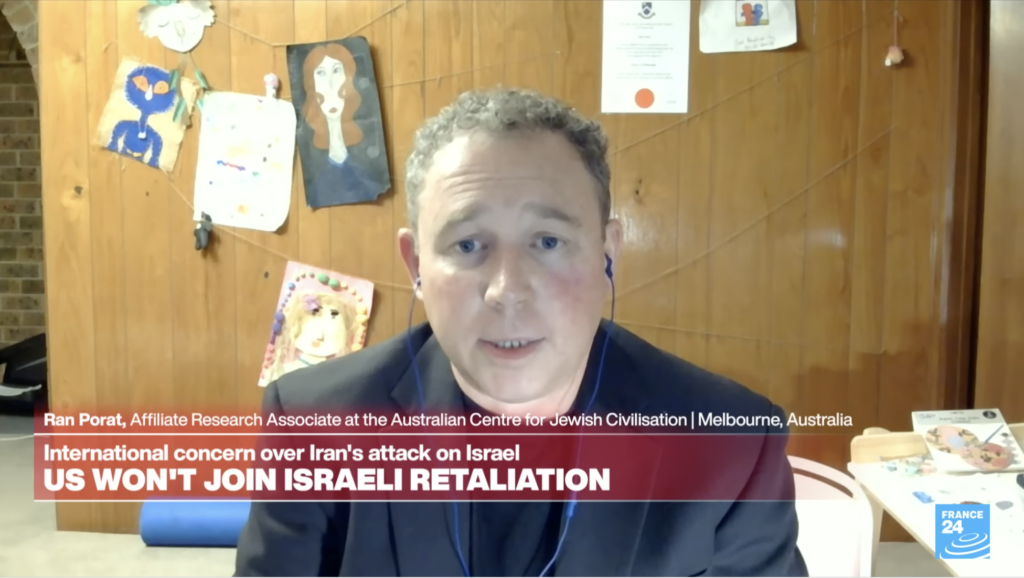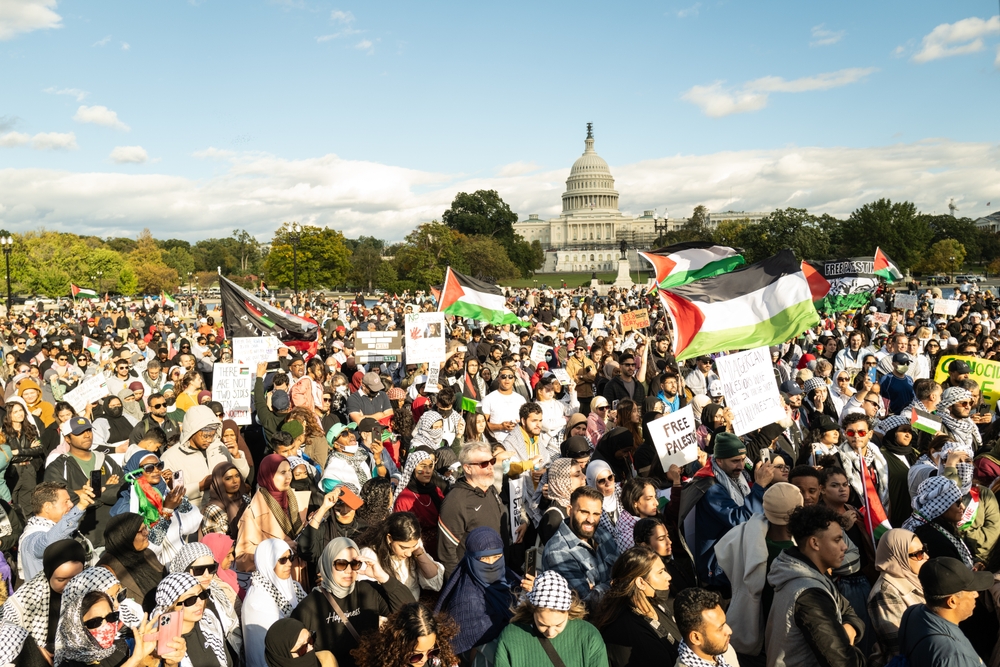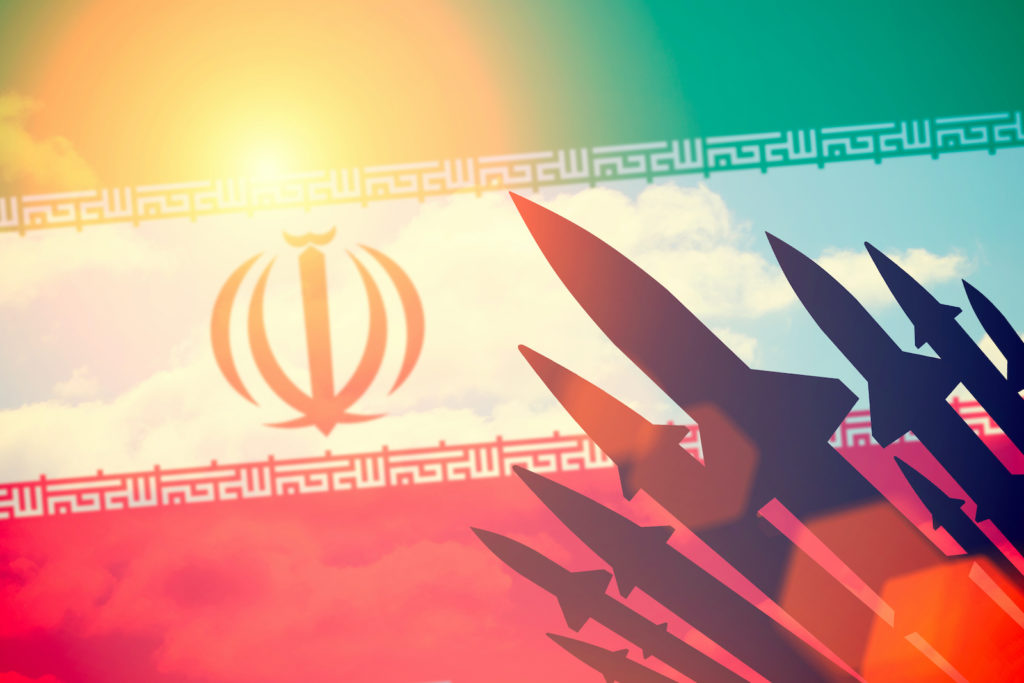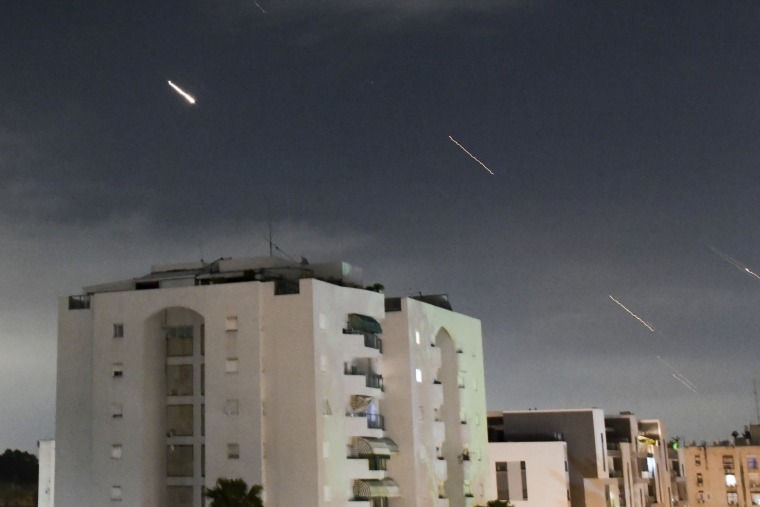UPDATES
Hezbollah and Lebanon
Aug 13, 2008 | AIJAC staff
Update from AIJAC
August 13, 2008
Number 08/08 #05
Today’s Update focuses on Lebanon, and the progress of growing Syrian and Hezbollah dominance of that country, especially in the wake of a recent government decision which effectively makes Hezbollah and its “resistance” against Israel an official arm of the Lebanese government.
First up is academic expert Jonathan Spyer, who argues that Syrian control of Lebanon is proceeding apace, and that long-hoped for normalisation of Syrian-Lebanese relations (which would effectively amount to a Syrian renunciation of a long-standing claim to incorporate Lebanon) is not imminent. Instead, he says, what we see is that Syria is effectively incorporating Lebanon into the Iran-Syria axis, while the latest effort reportedly includes giving Hezbollah advanced anti-aircraft capabilities, which would strongly change the balance of power and could easily spark a confrontation with Israel. For his full discussion of these worrying developments in Lebanon, CLICK HERE. More on the trends in Lebanon is discussed in this piece on the recent surprise visit to Beirut of US General David Petraeus.
Next up, Amos Harel, defence writer at Haaretz, analyses Israeli concerns about Hezbollah’s latest efforts to gain air defence capabilities. He says Hezbollah appears to be planning a confrontation over Israeli overflights of Lebanon, which would give the group a new excuse to engage in so-called “resistance” against Israel. He also explains the reasons for Israeli overflights. For this report, CLICK HERE. In possibly relevant news, Middle East sources are claiming that Syrian Brigadier-General Muhammad Suleiman, the aide to President Assad who was mysteriously killed last week, may have been supplying advanced anti-aircraft weapons to Hezbollah.
Finally, two Israeli counter-terror experts, Col. J Halevi and A. Perry, report that Hezbollah is rapidly expanding beyond Lebanon (in addition to its efforts there). They point to Hezbollah’s popularity across the Middle East, but also to a presence in parts of Africa, South America, Canada and elsewhere. They argue Hezbollah should be seen as a global arm of the Iranian revolution, and not simply as a Lebanese group, and that it is likely to be a major means of Iranian retaliation in the event of military efforts to stop Teheran’s illegal nuclear program. For their complete analysis of this danger, CLICK HERE. Supporting this view, here is a report that Germany is a “hotbed of Hezbollah activity.”
Readers may also be interested in:
- Israel’s Cabinet decides that if Lebanon is now saying Hezbollah is acting in the name of the Lebanese government, it will hold Lebanon responsible for Hezbollah’s actions.
- Top Israeli political scientist Shlomo Avineri on what really divides Israel and Syria in their indirect negotiations about the Golan Heights.
- An Egyptian story about a “unique Moustache” club descends into antisemitism when Adolph Hitler’s moustache gets a mention. Some expert comments on what this says about Egyptian society are here and here.
- The bizarre saga of the seven Gazans given Fullbright scholarships to study in the US. Washington first insisted pointedly Israel allow them to leave, but afterwards denied visas to some of them. A New York Post editorial on the strange story is here.
- An interesting New York Times piece on female suicide bombers prompts some useful discussion by a couple of experts, here and here.
- Some interesting comments on the roots of Middle East terrorism and Islamic extremism from former Islamist activist Maajid Nawaz, Canadian Muslim academic Salim Mansur, and Jordanian editor Ayman Safadi.
- A report that terrorist groups may be developing explosive underwear to replace the more easily detected explosive vests.
- Canada’s McLean’s magazine reports on the push at the UN to outlaw speech which “defames” Islam.
- A very important piece on the history of the international community’s almost complete ineffectiveness on Darfur. Also, an explanation for why Iran and Hamas love Sudan’s leader, President Omar Hassan al-Bashir, recently indicted for war crimes.
- Evidence says Pakistan’s intelligence forces helped bomb India’s Embassy in Kabul, Afghanistan. More on Pakistan’s ongoing destructive role in Afghanistan is here. Plus, a report that al-Qaeda in Iraq’s leader may now be in Afghanistan.
- The Jerusalem Post on the Russian invasion of Georgia.
- The trial of Salah Uddin Shoaib Choudhury, the Bangladeshi newspaper editor up on capital charges for advocating dialogue with Jews and Christians, starts today.
Analysis: Subtly and determinedly, Syria is taking over Lebanon
By JONATHAN SPYER
Jerusalem Post, August 8, 2008
Lebanese President Michel Suleiman is to visit Syria next week, to discuss the opening of diplomatic relations between the countries, a Lebanese official told reporters this week.
French President Nicolas Sarkozy last month hailed President Bashar Assad’s expression of willingness in principle to establish diplomatic relations with Lebanon as “historic progress.”
The establishment of a first-ever Syrian Embassy in Beirut is probably not imminent, for various reasons. Nevertheless, the signs of normalization in relations between Syria and Lebanon are significant. They are the latest indication of Syria’s growing confidence, and far from being a harbinger of more peaceful times in the neighborhood, they offer clues as to the shape of possible further strife.
The formation of the new Lebanese government after the Beirut clashes in May represented a very significant gain for the pro-Syria element in Lebanese politics. Hizbullah now controls a blocking 11 of the 30 cabinet seats. With a Lebanese government of this type, there is no reason for Syria to be in dispute there. The short period when Damascus felt the need to express its will in Lebanon solely in a clandestine way is drawing to a close.
Still, Western hopes for the rapid establishment of formal relations between the two countries are probably exaggerated. Damascus is in no hurry. Syria’s return to Lebanon is a work in progress. Assad has listed the preconditions for the establishment of diplomatic relations to become a real possibility. These include the passing of an election law, and the holding of the scheduled May 2009 general election.
Behind Assad’s honeyed words, one may glimpse the contours of Syrian strategy in the next stage. The election of May 2009 will be conducted under the shadow of Hizbullah’s independent and now untouchable military capability.
Intimidation will go hand in hand with the real kudos gained by the movement and its allies because of recent events – including the prisoner swap with Israel, and the Doha agreement that followed the fighting in May. The result, the Syrians hope, will be the establishment of a government more fully dominated by Hizbullah and its allies, in which the pro-Western element will have been marginalized.
Such a government would mark the effective final reversal of the events of the spring of 2005, when the Cedar Revolution compelled the Syrian army to leave Lebanon. Damascus would then go on to conduct friendly and fraternal relations with the new order in Beirut. Mission accomplished.
If this strategy plays out, however, it will represent not the normalization of Syrian-Lebanese relations, but rather the enveloping of Lebanon into the regional alliance led by Iran, of which Syria is a senior member.
On the ground in Lebanon, this regional alliance is still engaged in consolidating its gains. The lines separating the official Lebanese state from the para-state established by Hizbullah continue to blur. The new government’s draft policy statement, which is still to be discussed by the parliament, supports the “right of Lebanon’s people, the army and the Resistance to liberate all its territories.”
This statement thus nominally affords the Resistance. i.e. Hizbullah, equal status with the Lebanese Armed Forces, and appears to consider it an organ of official government policy.
The new organ of government policy, meanwhile, is building its strength. Ostensibly for the mission of “liberating” 20 square kilometers of border farmland, Hizbullah has built a capability of 40,000 missiles and rockets, is frenziedly recruiting and training new fighters, and is expanding and developing its command and logistics center in the Bekaa.
The latest talk is of Iranian-Syrian plans to supply Hizbullah with an advanced anti-aircraft capacity that would provide aerial defense to the investment in rockets and missiles. Such a move would represent a grave altering of the balance of power. Serious moves towards it could well prove the spark for the next confrontation.
In all its moves, the Iranian-Syrian-Hizbullah alliance has known how to combine brutal military tactics on the ground with subtle and determined diplomacy. Its willingness to throw away the rule book governing the normal relations between states has been perhaps its greatest advantage. While the West sees states as fixed entities possessing certain basic rights, Iran and Syria see only processes of rising and falling power. They see themselves as the force on the rise, and the niceties of internationally fixed borders as a trifle unworthy of consideration.
The region has known the rise of similar systems of power and ideology in the past. Experience shows that such states and alliances have become amenable to change and compromise – if at all – only after experiencing defeat, setback and frustration.
The Syrians and their allies, of course, are far weaker in measurable military and societal terms than their rhetoric would suggest. Western (including Israeli) actions over the last years have tended to blur this fact. The general acceptance of the transformation of Lebanon into a platform for this alliance – and the lauding of it as ‘historical progress’ – is the latest example of this. The reacquaintance of rhetoric with reality on all sides is long overdue.
Jonathan Spyer is a senior research fellow at the Global Research in International Affairs Center at the Interdisciplinary Center, Herzliya.
————————————————————————
ANALYSIS / This time around, Hezbollah is aiming higher
By Amos Harel
Haaretz, 06/08/2008
Just as they were during the first three years after Israel quit Lebanon in May 2000, Israeli overflights of its northern neighbor now threaten to become the main point of Israel-Hezbollah friction. During the last round, however, Hezbollah had no weapons capable of truly threatening Israel’s planes. This time, aided by Iran and Syria, it seems to be aiming much higher.
Israel deems the overflights essential for intelligence purposes. While it halted them when it first left Lebanon, it resumed them five months later, after Hezbollah kidnapped three Israeli soldiers, and never stopped them again. It was these flights, for instance, that enabled Israel to learn the positions of the long-range missiles that it destroyed on the first day of the Second Lebanon War in 2006. They presumably also provide clues to developments in Syria.
For Hezbollah, the flights were a threat, but also an opportunity: They provided a pretext for continuing its “resistance to the Israeli occupation.” It continued its anti-aircraft fire until summer 2003, when one such barrage killed a child in Shlomi, and Israel’s fierce retaliatory bombardment caused the organization to desist. Advertisement
Now, however, it seems keen to reopen this front, even at the cost of provoking a harsh Israeli response.
The aerial front was Hezbollah’s principal weak spot during the Second Lebanon War. Israel’s air force did as it pleased in Lebanon’s skies, from destroying the Fajr missiles to dropping special forces in Hezbollah’s stronghold of Bekaa. Now, according to both Military Intelligence assessments and recent reports in the Arabic media, Hezbollah is seeking to close this gap.
Should Hezbollah install advanced anti-aircraft batteries, accompanied by modern radar, this would cause significant problems for Israeli overflights. And that in turn would score domestic points for the organization, justifying its refusal to disarm. Smuggling in such batteries should not be difficult, given the massive quantities of rockets and antitank missiles it has already succeeded in bringing in from Syria.
Which missiles in particular Israel is worried about has not been publicized. But in 2005, when Russia was reportedly about to sell SA-18 missiles to Syria, Israel protested vehemently, on the grounds that such missiles can easily be removed from their carriers, making them highly suitable for use by terrorist organizations such as Hezbollah.
————————————————————————
Hizbullah’s global reach
Shiite group’s reach extends far beyond Lebanon, poses global threat
J. Halevi, A. Perry
Ynet.com
08.10.08, 08:41
Recently, Iran’s sabre-rattling has escalated in an attempt to deter an attack on its nuclear facilities. Last month Iranian President Mahmoud Ahmadinejad threatened that “the (Iranian) armed forces will cut off the enemies’ hands before they can put their fingers on the trigger.”
While many have interpreted this as a possible pre-emptive missile strike emanating from Iran, there is an even more sinister possibility.
Over the last few years, Iran’s proxy Hizbullah has been spreading its influence far and wide. In its brinksmanship with the West, Iran has learned much from the two neighboring Gulf Wars. As opposed to Saddam Hussein, whose threat of an all-out campaign against the West was largely rhetoric, Iran takes a global view and is diligently preparing terrorist networks all over the world to spring into action when the word is given.
Hizbullah is an integral part of the Islamic revolution regime in Tehran. The ruling Iranian religious authority gave Hassan Nasrallah the title of Lebanese “representative,” making him an essential part of the Iranian revolution.
Hizbullah receives millions of dollars a year from Iran to finance its operations. After the Second Lebanon War it received even more funds to compensate for its military and civilian losses and to rehabilitate the Shiite villages that supported it. The Iranian funds are transferred to Hizbullah by the al-Quds Force of the Revolutionary Guards, the Iranian Foreign Ministry, and official institutions with branches in Lebanon.
The current relative calm along Lebanon’s border with Israel should not be mistaken for a cooling off of Hizbullah’s enthusiasm. Rather, it serves to mask Hizbullah’s focus of its main goals: changing the Lebanese constitution and ensuring a greater Shiite presence in the Lebanese parliament, with an eye to eventually taking over Lebanon by exploiting the country’s democratic processes to turn it into a radical Shiite Islamic country like Iran.
However, Hizbullah’s mission reaches far beyond Lebanon. Hizbullah is very popular in the Arab world, even amongst Sunnis, and is an important factor in sweeping the masses into jihad. The organization assists those who target their own governments in weakening Sunni opposition and in creating an admittedly ad hoc strategic alliance with the all the branches of the Muslim Brotherhood across the globe, infiltrating even Palestinian areas.
These activities are in line with the Iranian leadership’s 50-year plan made public at the end of the 1990s. According to an Iranian document, the plan is to export the Islamic revolution to neighboring countries and beyond through preaching, encouraging Shiite emigration, purchasing real estate, forming political organizations, infiltrating the local political establishments, and taking over the various parliaments and focal points of political power.
‘We have the means’
Iranian-Hizbullah footprints can be found in various African and South American countries. In Nigeria, for example, Hizbullah operates within the expatriate Lebanese Shiite and local populations. The leader of the indigenous Shiites in Nigeria, Sheikh Zakzaky, has created idolism for Hassan Nasrallah and the leaders of Iran.
In Venezuela and other South American countries Hizbullah has been waging a long-term campaign to convert the native Indians to Shiite Islam. Teodoro Rafael Darnott, also known as “’Commander Teodoro,” recently claimed, “If the United States were to attack Iran, the only country ruled by God, we would counterattack in Latin America and even inside the United States itself. We have the means and we know how to go about it. We will sabotage the transportation of oil from Latin America to the US. You have been warned.”
On June 29 the Kuwaiti daily al-Siasa reported that Hizbullah was training young men from Venezuela in its military camps in south Lebanon to prepare them to attack American targets. In addition, Hizbullah and Iran has set up secret cells abroad for carrying out terrorist attacks. Such cells were responsible for the attacks on the Israeli Embassy and the AMIA Jewish Center building in Buenos Aires in the early 1990s, the attacks in Kuwait and Saudi Arabia, and attempted attacks in London and Thailand.
Meanwhile, ABC reported that the American and Canadian intelligence services had information about Hizbullah sleeper cells in Canada whose role was to gather intelligence about Israeli and Jewish targets in Ottawa and Toronto for possible terrorist attacks.
The ramifications of Hizbullah’s reach are the very real threat they pose in many corners of the world. Iran has understood that to truly threaten and hold the West hostage it must create a multi-faceted menace to the citizens of these nations and their interests. Hizbullah’s web of terror cells provides them just that.
The UK government is one of very few in the world to fully recognize this threat by recently outlawing the military wing of Hizbullah. It is time that more Western nations follow suit if they are going to neutralize Iran’s surrogate and joker card in case of an attack on its nuclear program.
Lt. Col. (res.) Jonathan D. Halevi is a senior researcher of the Middle East and radical Islam at the Jerusalem Center for Public Affairs. He is the co-founder of the Orient Research Group Ltd. and is a former advisor to the Policy Planning Division of the Ministry of Foreign Affairs
Ashley Perry is an editor at the Jerusalem Center for Public Affairs for the Middle East Strategic Information project
Tags: Afghanistan/ Pakistan, Hezbollah











